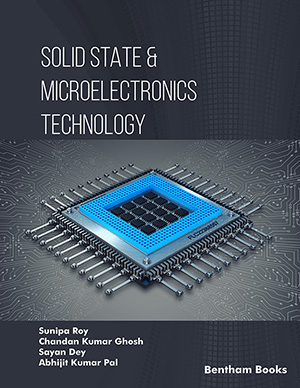Abstract
In recent times, crystalline semiconductors have played a major role in
device fabrication for all purposes, where crystal structure plays the most crucial role.
Herein, all kinds of fundamental unit cell structures have been briefly discussed,
whereas Miller indices have been introduced to illustrate the orientation of the crystal
structures. Basic quantum mechanics have been introduced in order to explain the
fundamental properties of semiconducting materials. In this context, Sommerfeld’
free electron theory has been considered. Although this model corroborates with a few
experimental observations, but can’t differentiate between semiconductors, insulators
and metals. Then Kronig – Penney, which successfully explains the deviation on the
basis of the band concept, has been considered. Following the Kronig – Penney model,
Bloch’s theory has been introduced, and it well explains the origin of conduction and
valence bands. From this concept, different types of semiconducting materials, e.g.,
direct and indirect band gap semiconductors, n- and p-type semiconductors, etc., have
emerged. Here, properties of charge carriers, such as their charge, effective mass etc.,
have also been discussed. Knowing these parameters, conductivity expression and
related scattering phenomena influencing conductivity have been briefly elaborated.
Keywords: Band, Crystal structure, Fermi – Dirac statistics, Scattering, Semiconductor.




















